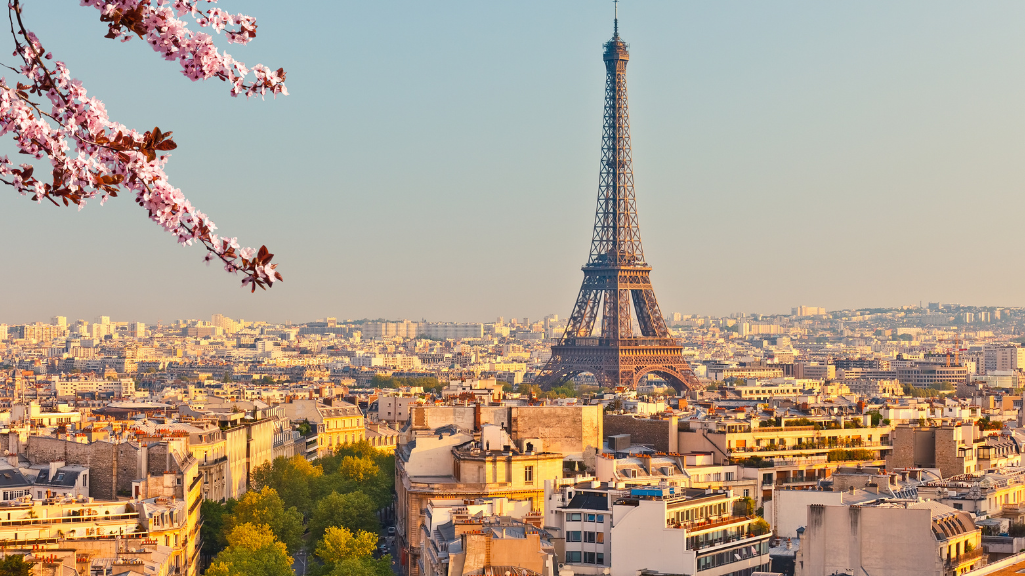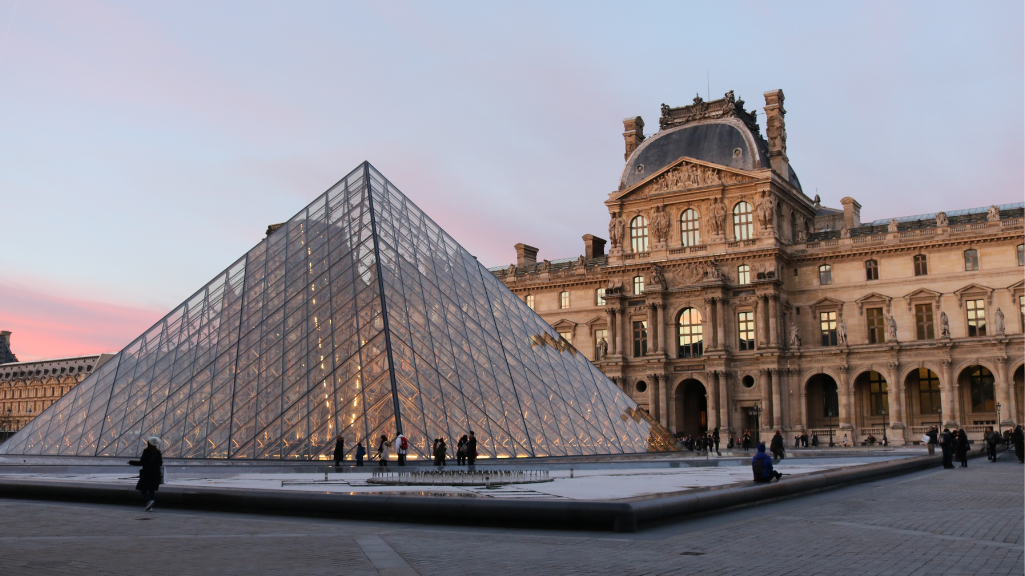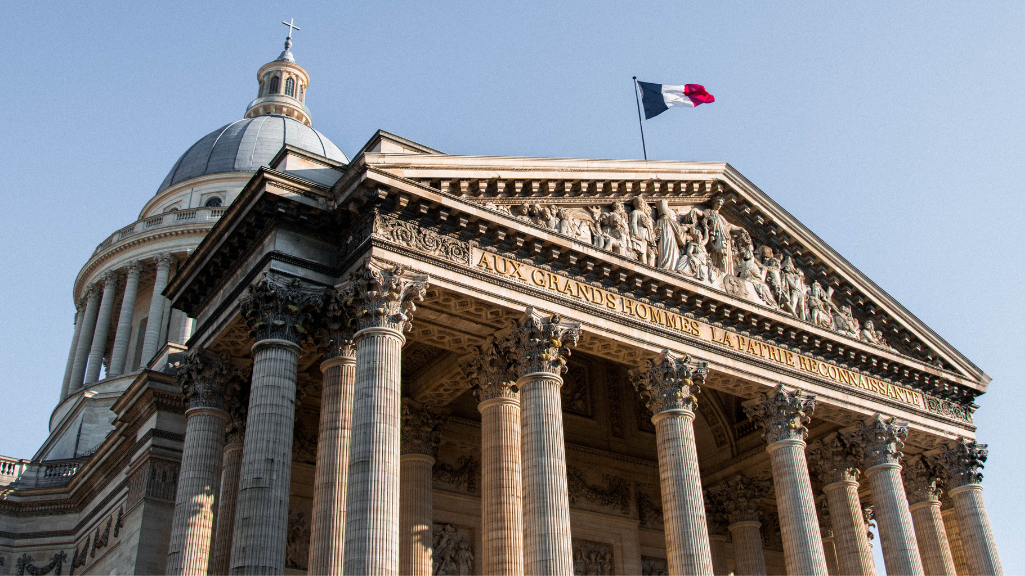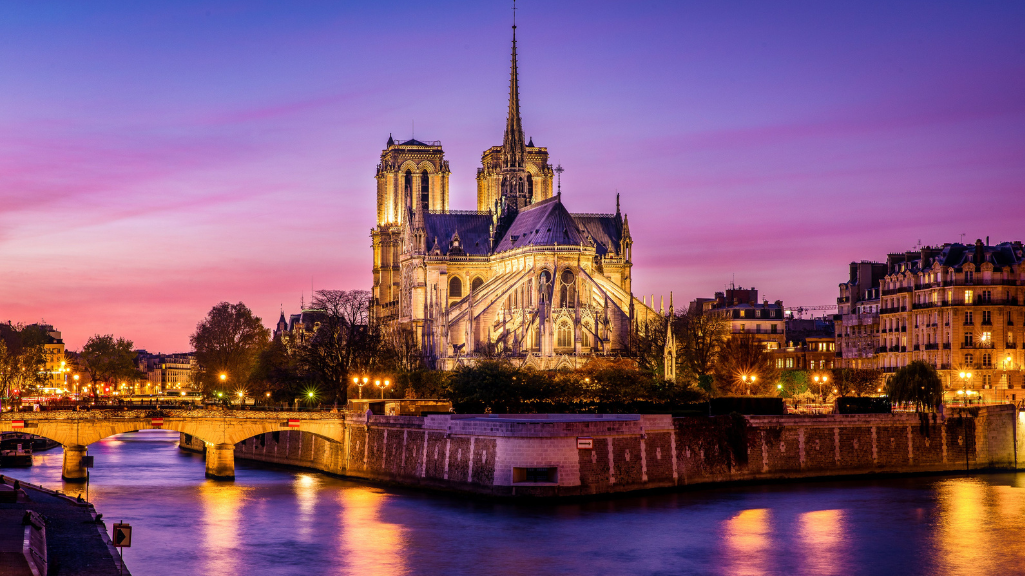The Eiffel Tower
an iconic symbol of France and a marvel of engineering, stands as a testament
to human ingenuity and artistic expression. Completed in 1889 as the centerpiece of the 1889
World's Fair, held in Paris to celebrate the 100th anniversary of the French Revolution, the
Eiffel Tower rises gracefully from the Champ de Mars, captivating millions of visitors each
year.
Standing at a staggering height of 324 meters (1,063 feet), the Eiffel Tower held the title of
the world's tallest man-made structure until 1930. Composed of intricate iron lattice-work, it
consists of four distinct levels, each offering a unique experience.
The tower's base
showcases
its robust construction, transitioning into an elegant and delicate framework as it ascends.
Visitors can ascend the tower via elevators or stairs to witness breathtaking views of Paris
from its observation decks. The first level, around 57 meters above
the ground, offers a
plethora of restaurants, souvenir shops, and an interactive glass floor, giving visitors a
captivating look at the tower's intricate base. The second level, at approximately 115 meters,
presents a wider panoramic view of the city and hosts an immersive cultural exhibition, while
the third level, at around 276 meters, provides an awe-inspiring vista stretching over the
Parisian landscape.
The Eiffel Tower's graceful silhouette against the Parisian sky, illuminated by
thousands of
shimmering lights at night, is a sight to behold. It has become a timeless emblem of romance,
adventure, and artistic innovation, attracting couples, tourists, and photographers from around
the world. Its enduring allure serves as a reminder of the intersection between human creativity
and engineering excellence, making the Eiffel Tower an enduring symbol of France's rich cultural
heritage and a true wonder of the modern world.

The Lourve Museum
situated in the heart of Paris, France, is an illustrious cultural
institution renowned for its unparalleled collection of art and historical treasures. Originally
constructed as a medieval fortress in the 12th century, it evolved over centuries into a grand
palace before being transformed into a museum during the French Revolution. Today, the Louvre
stands as one of the world's largest and most visited museums, a testament to the nation's rich
artistic heritage.
The museum's iconic glass pyramid entrance, designed by architect I.M. Pei, welcomes millions of
visitors annually. Once inside, visitors embark on a captivating journey through time and
culture. The Louvre's vast galleries house an astonishing array of art spanning from ancient
civilizations to the 19th century. It boasts an awe-inspiring collection of sculptures,
paintings, decorative arts, and artifacts, including renowned masterpieces like Leonardo da
Vinci's "Mona Lisa," the ancient Greek statue "Venus de
Milo," and Eugene Delacroix's "Liberty
Leading the People."
The Louvre's thematic galleries and exhibition spaces offer a comprehensive exploration of human
creativity, encompassing Egyptian antiquities, classical sculptures, European paintings, and
beyond. The Napoleon III Apartments and the opulent Hall of Mirrors reflect the museum's royal
past, providing a glimpse into the lavish lifestyles of French monarchs.
Wandering through the Louvre's grand halls, visitors are transported across continents and
epochs, encountering artistic expressions that have shaped cultures throughout history. The
museum's commitment to preservation, education, and cultural exchange cements its status as a
global cultural hub. With its extraordinary collection, architectural grandeur, and historical
significance, the Louvre Museum stands as a symbol of France's dedication to preserving and
sharing its artistic legacy with the world, inviting visitors to embark on a captivating voyage
through human creativity and imagination.
The Lourve Museum

The Panthéon
an architectural gem located in the vibrant heart of Paris, France, stands as a
monumental tribute to the nation's luminaries and a masterpiece of neoclassical design.
Originally constructed as a church dedicated to St. Genevieve, the patron saint of Paris, it was
repurposed in the 18th century to become a mausoleum honoring illustrious figures who have left
an indelible mark on French history.
The Panthéon's imposing facade, adorned with Corinthian columns and intricate reliefs, commands
attention as it rises majestically against the sky. Its iconic dome, a marvel of engineering and
aesthetics, crowns the edifice, punctuating the Parisian skyline. The interior continues to awe
with its vast central nave, flanked by grand aisles, and a stunning oculus that bathes the space
in natural light.
Beneath the Panthéon's grand dome, a roster of distinguished individuals rests in eternal
repose. Among them are luminaries such as Voltaire, Rousseau, Victor Hugo, and Marie Curie,
representing a diverse array of fields and accomplishments. The crypt below, with its solemn
ambiance, serves as a contemplative space for visitors to pay their respects to these visionary
minds and their enduring contributions to French culture, science, and society.
Beyond its role as a mausoleum, the Panthéon also serves as a venue for intellectual and
artistic exploration. Its history is intertwined with the narrative of the French Revolution,
and its conversion into a secular monument during the Revolution underscored the nation's
evolving values.
The Panthéon's significance extends beyond its architectural and historical attributes; it
embodies the ideals of liberty, equality, and fraternity that have shaped France's identity. Its
striking presence and the stories it holds inspire generations to reflect on the legacy of human
achievement and the enduring impact of those who have shaped the course of history.

The Notre-Dame Cathedral
an architectural marvel nestled in the heart of Paris, France, is a
poignant symbol of French Gothic artistry and cultural heritage. Construction of this
masterpiece began in the 12th century and spanned over two centuries, culminating in a
harmonious blend of intricate design, spiritual significance, and
historical significance. The
cathedral's awe-inspiring facade boasts exquisite details that exemplify the finest Gothic
craftsmanship. Its twin towers, reaching towards the heavens, stand as a testament to human
ambition and devotion. The intricate stone carvings that adorn the exterior depict biblical
scenes, saints, and mythological creatures, captivating the eye with their intricate beauty and
storytelling.
Entering Notre-Dame, visitors are enveloped in an atmosphere of grandeur and tranquility. The
interior's soaring rib-vaulted ceilings, rose windows, and slender columns create a sense of
ethereal magnificence. The legendary stained glass windows, including the iconic
Rose Windows,
infuse the space with a kaleidoscope of colors, casting a mesmerizing play of light across the
interior.
One of the cathedral's most sacred features is the Notre-Dame de
Paris, a revered statue of the
Virgin Mary and the Christ Child. The ambulatory, chapels, and nave house a plethora of
religious artworks, sculptures, and relics that pay homage to centuries of faith and devotion.
The tragic fire that engulfed Notre-Dame in 2019 served as a stark reminder of the cathedral's
vulnerability and its enduring importance to French and global history. The subsequent
international outpouring of support for its restoration underscores its significance as a
cultural and spiritual beacon.
Notre-Dame Cathedral, with its architectural splendor and historical resonance, remains a
timeless testament to human artistic achievement and spiritual expression. Its enduring presence
in the Parisian skyline and its profound impact on art, culture, and faith make it a cherished
jewel in France's cultural crown.




